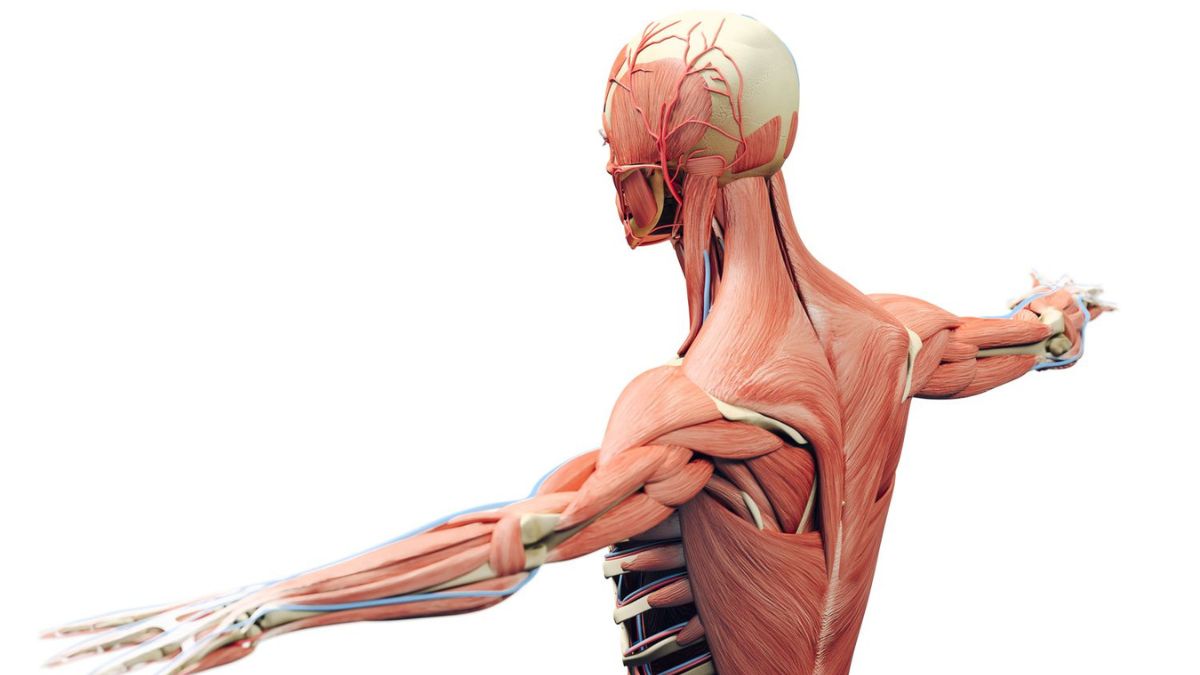EDUCATION
Organelle s: The Essential Components of Cells

Organelle s are basic structures within a cell, and each plays a unique role and performs a unique function. These minute, typically membrane-bound compartments behave like the organs of a larger organism, coordinating their efforts to protect the health of the larger cell. This page will introduce you to organelles, their many forms and functions, and the role they play in maintaining cellular health.
1.What Are Organelles?
Structures called organelle s are unique to the eukaryotic cells that make up plants, animals, and fungus. Different ones are essential to keeping a cell’s life activities running smoothly. Organelle s are like little factories; each one performs a specific purpose and works in concert with the others to ensure the cell’s survival and proper functioning.
2.Types of Organelles
Nucleus
One of the most common names for the nucleus is “cell’s control centre.” It controls the cell’s functions because of the DNA and other genetic information it stores. It acts as the cell’s “brain” by encoding and processing vital information.
Mitochondria
Mitochondrion mitochondria are the cells’ power factories. Through mitochondrial respiration, they generate a compound called adenosine triphosphate (ATP), which the cell uses for fuel.
Endoplasmic Reticulum
Protein synthesis and lipid metabolism both take place within this organelle. Both RER and SER exist, however they have different purposes in the body.
Golgi Apparatus
The Golgi apparatus can be thought of as the “cell’s post office.” To prepare proteins and lipids for intracellular and extracellular transport, it alters, sorts, and bundles them.
Lysosomes
Lysosomes contain enzymes that degrade waste products, damaged organelles, and foreign substances, making them the cell’s “recycling center” and essential to its continued health and cleanliness.
Peroxisomes
Peroxisomes are involved in detoxification and the breakdown of fatty acids. They perform a function in safeguarding the cell from hazardous chemicals.
Chloroplasts (in Plant Cells)
These chloroplasts are organelles that exist in plant cells that perform photosynthesis.
The process of photosynthesis in which plants turn daylight into energy, takes place within chloroplasts, and are found only within the mitochondria of plants.
3.Structure and Functions of Organelles
Nucleus
The center of the nucleus, that holds the genetic material of a cell, is enveloped by a double membrane that surrounds it as well as has a particular architecture and set of activities. Growth, metabolism, and reproduction are only a few of the cellular processes that are regulated.
Mitochondria
Both the outer and inner membranes of mitochondria are filled with enzymes. Through the electron transport chain, they generate ATP that is used to power many cellular functions.
Endoplasmic Reticulum
Ribosomes, which play a role in protein synthesis, are exposed on the RIVER’s surface. Despite its absence of ribosomes, the SER is essential for lipid metabolism.
Golgi Apparatus
The Golgi apparatus is made up of cisternae, which are essentially flattened sacs. It remodels proteins and lipids and encapsulates them in vesicles for transport.
Lysosomes
The enzymes housed in lysosomes aid in the degradation of waste products and cellular debris, helping to keep the cellular environment clean.
Peroxisomes
Important for lipid metabolism, peroxisomes also detoxify hazardous chemicals via their enzyme content.
Chloroplasts
The green pigment chlorophyll is found in chloroplasts and is essential for photosynthesis in plant cells. They use the energy from the sun to make glucose and oxygen.
4.Importance of Organelles in Cells
The effective functioning of the cell depends on the coordinated efforts of its many organelles. Without these little components, cells would be unable to carry out their vital functions.
5.Organelles and Cellular Health
When organelles are healthy, the cell as a whole functions optimally. Disease and cellular malfunction can occur when organelles become imbalanced or are damaged.
6.Conclusion
In conclusion, organelles are the unsung heroes of the cellular world, performing specialised tasks that are essential for the cell’s survival. It is impossible to fully appreciate the microscopic beauty and complexity of life without first gaining an understanding of their roles and significance in cellular health.
7.FAQs
1.What is the primary function of the nucleus?
The nucleus, which houses genetic information, acts as the cell’s command centre.
2.How do mitochondria produce energy for the cell?
Cellular respiration, which occurs in mitochondria, results in ATP production.
3.What is the role of the Golgi apparatus in a cell?
The Golgi apparatus is involved in the processing, sorting, and packaging of proteins and lipids for transport.
4.Why are lysosomes essential for cell health?
Cleanliness within the cell is ensured by lysosomes, which degrade waste and other cellular detritus.
5.What distinguishes chloroplasts from other organelles?
Chloroplasts are found only in plant cells and are responsible for photosynthesis, the process by which plants convert sunlight into usable energy.
EDUCATION
GarnetHillsKids.com: Nurturing Young Minds in the Digital Era

It might be difficult to locate a platform that serves as a learning tool and entertainment hub for children in this era of rapid technological advancement. Nevertheless, garnethillskids.com stands out, effortlessly blending entertainment and education. This digital meeting place is made to grab young brains with its abundance of engaging features and security precautions.
Navigating GarnetHillsKids.com
A welcoming and intuitive design makes navigating GarnetHillsKids.com a snap. Parents may peruse age-appropriate sections and categories with ease, guaranteeing that every youngster will find something interesting.
Interactive Learning Resources
With its vast library of instructional games and activities, garnethillskids.com stands apart. In addition to being engaging, these resources have been thoughtfully selected to be suitable for the target audience’s age, which facilitates efficient learning.
Safety Measures
Security is of the utmost importance in the online world. This is why GarnetHillsKids.com has made privacy and strict parental controls a top priority. Children are interacting with information in a safe internet environment, so parents can trust them.
Engaging Content for Different Age Groups
Toddlers, pre-schoolers, and school-aged children have varied requirements, thus GarnetHillsKids.com caters to each age group with age-appropriate content. The exercises are designed to be educationally valuable by smoothly incorporating learning stages.
Subscription Benefits
In contrast to other platforms, GarnetHillsKids.com provides premium material at no additional cost to its users. You get your money’s worth with the membership thanks to the premium features and extra resources.
Community and Social Interaction
There is more to the way GarnetHillsKids.com encourages community building than just individual pursuits. Online forums and message boards provide a safe space for children to build social skills via conversation, sharing, and learning from one another.
Parental Involvement and Monitoring
We at GarnetHillsKids.com know how important it is for parents to be involved. To provide a healthy and controlled environment for children when they are online, the platform includes tools that parents may use to monitor their progress.
GarnetHillsKids App
With a specialized mobile app, GarnetHillsKids.com caters to families that are always on the move. Thanks to its intuitive design and wealth of useful features, this app is a hit with both children and their parents.
Testimonials and Reviews
First-hand accounts convey a great deal. The legitimacy of GarnetHillsKids.com is bolstered by favorable comments from parents who have seen the platform’s positive influence on their children’s growth.
Continuous Updates and Improvements
Based on what visitors have to say, GarnetHillsKids.com is always changing and improving. To keep it at the cutting edge of digital learning and entertainment, the platform is dedicated to constant upgrades and enhancements.
Comparison with Other Kids’ Platforms
About GarnetHillsKids.com, what makes it unique? After comparing it to the competition, we can see how it stands out as the best option for parents looking for a full-featured website for their kids.
Conclusion
A safe place online where learning and fun come together is GarnetHillsKids.com. Trusted by parents to foster their children’s minds in the digital age, it promises a safe environment, interesting information, and constant progress.
FAQs
Is GarnetHillsKids.com safe for my child to use independently?
Sure thing! Strong parental controls and privacy measures are included to ensure the safety of children on GarnetHillsKids.com.
Are the educational games suitable for different age groups?
Sure, the site has plenty of things to do for kids of all ages, from babies and preschoolers to elementary schools.
What are the subscription benefits, and are they worth it?
The premium features and tools that subscribers have access to provide great value for a little investment.
How does the platform encourage social interaction among kids?
Answer: The forums and discussion boards on GarnetHillsKids.com allow children to communicate and share their stories.
How often does the platform update its content?
The platform is dedicated to constantly updating information based on user feedback, so you can be sure that it is new and relevant.
EDUCATION
Homeworkify: Revolutionizing Homework Management

Nowadays, kids have a lot on their minds with all their school schoolwork, extracurricular pursuits, and additional activities. New digital tools have revolutionized the conventional method of managing schoolwork. Of them, Homeworkify is revolutionary because it provides kids with a simple way to manage their homework, keep tabs on their progress, and do it all in record time. Read on as we investigate Homeworkify in detail, looking at its features, advantages, and effects on students’ performance.
Understanding Homeworkify
Developing a streamlined process of homework management with Homeworkify, a various-inclusive website for kids of all ages. With Homeworkify, students of every grade level will have a one-stop shop to handle their homework, creating customized reminders, and monitoring how they are doing. Homeworkify takes the complexities out of controlling one’s homework load and gives learners agency over their educational education with its easy-to-use interface and useful functions.
Key Features of Homeworkify
Homeworkify is an excellent resource for managing student work since it lets students make comprehensive to-do lists, arrange projects by time limit or topic, and set priority following gravitation.
Deadline Reminders
Homeworkify gives pupils the peace of mind that they will never miss another deadline with its built-in alerting capabilities. To keep students on track with their assignments, reminders may be personalized to suit each student’s preferences.
Progress Tracking
Homeworkify provides students the capacity to track their advancement in real-time, providing them with insights into tasks that have been done, projects that are nevertheless still outstanding as well as their general competence levels. Professionalism is promoted and learners are encouraged to continue to focus on their school goals by using this attribute.
Collaborative Tools
Students may use Homeworkify to collaborate on group projects, exchange materials, and talk about their homework. This encourages cooperation and enhances the learning process by allowing students to share information.
Cross-Platform Accessibility
Homeworkify empowers students with the flexibility to handle their schoolwork from any point of view or device, thanks to its seamless multi-platform access.
Benefits of Using Homeworkify
Improved Organization
To assist students stay on top of their studies and not miss any assignments or falling behind, Homeworkify consolidates all of the homework-related chores and due dates.
Enhanced Productivity
Homeworkify’s task management tools help students stay focused and get more done by reducing distractions. Students can efficiently manage their time, allowing them to fully utilize it for learning.
Reduced Stress
Students’ mental health might suffer when they have too many tasks to complete promptly. Homeworkify helps students overcome this challenge by giving them an organized picture of all their assignments along with their due dates.
Time Management Skills
Students may gain time management skills that will serve them well in school and beyond with the help of Homeworkify, which helps them to set priorities and plan their schedules effectively.
Parental Involvement
Families may stay connected by using Homeworkify to observe what their child is completing in school and receive help or advice when they require it. The outcome is an atmosphere where students, educators, and parents are all united in their efforts to improve instruction.
Impact of Homeworkify on Student Success
Students’ overall performance is greatly improved when Homeworkify is incorporated into their academic habits. Use of Homeworkify is associated with better academic achievement, better time management skills, and lower stress levels in kids, according to studies. The study skills that children need to succeed academically may be found in Homeworkify, which encourages organization, productivity, and teamwork.
Conclusion
Ultimately, Homeworkify proves to be a game-changing answer for students’ homework management woes, equipping them with an arsenal of effective tools to conquer academic challenges. Homeworkify is creating waves in the homework landscape with its intuitive design, powerful capabilities, and beneficial effect on student achievement. Homeworkify establishes the path to academic brilliance and lasting success by giving kids agency over their learning. Discover the power of Homeworkify and maximize your academic potential!
FAQs
What makes Homeworkify different from other homework management tools?
Because of its intuitive design, extensive feature set, and compatibility with several platforms, Homeworkify stands out. A one-stop-shop for kids of all ages, it stands out with its focus on task management, due-date reminders, and progress monitoring.
Can Homeworkify be used for group projects and collaborative work?
Collaborative capabilities are available in Homeworkify, so students may work on tasks collaboratively. As a result, students can work together more effectively, discuss assignments, and share materials, which improves their learning experience as a whole.
Is Homeworkify suitable for all academic levels?
Sure thing! Homeworkify is created to meet the varied demands of students across all academic levels, from elementary school children handling simple assignments to university students balancing complicated projects.
How does Homeworkify help improve time management skills?
If students use Homeworkify, they will be more likely to establish deadlines, organize their time wisely, and prioritize their work. Time management skills are vital for academic achievement, and the platform’s progress monitoring function helps students build these abilities by providing insights into how much time they spend on each assignment.
Can parents use Homeworkify to monitor their child’s academic progress?
The short answer is yes, Homeworkify possesses a tool that lets parents see everything their child is focusing on in the classroom. As a result, families have a greater likelihood to be involved with the schooling of their kids, which helps pupils in numerous capacities.
EDUCATION
Exploring the World Through Cross Country Education

The idea of studying abroad as a way to acquire exposure to new cultures and widen one’s perspectives has gained widespread favor in today’s globalized society. This article looks into the subject of cross-country education, including such topics as the advantages, disadvantages, suggestions for a positive experience, available programmes, the use of technology, and more. Begin this international educational adventure with me.
1.Introduction to Cross Country Education
The concept of “cross-cultural education” emphasizes the process of searching out new education in nature, cultural, and personal growth experiences in a nation different from one’s own. This kind of instructional material provides students with the rare opportunity to learn directly from and about people from a variety of socioeconomic and lingual backgrounds.
2.The Benefits of Cross Country Education
- Cultural Enrichment: One’s own cultural development can benefit by exposure to another culture, as can one’s awareness of the world’s great diversity.
- Language Proficiency: Relocating to a New Country to Improve Your Language Skills.
- Personal Growth: One’s own development is aided by a cross-cultural education since it teaches one to be flexible and resourceful.
- Networking Opportunities: It provides students with opportunities to expand their professional networks both locally and internationally.
3.Challenges Faced in Cross Country Education
- Cultural Shock: The difficulty of adjusting to a new culture and lifestyle is sometimes referred to as “cultural shock.”
- Academic Differences: Two Academic Distinctions Various educational systems exist over the world, necessitating adaptation.
- Financial Considerations: There are monetary factors to think about, such as tuition, living costs, and currency exchange.
4.Tips for a Successful Cross Country Education Experience
- Plan Ahead: Find out everything you can about your intended location, degree programme, and required paperwork.
- Embrace Local Culture: Immerse yourself in local culture by talking to and eating with locals and taking part in cultural events and activities.
- Stay Organized: Keep yourself well-organized by setting and sticking to regular study and leisure time goals.
- Stay Connected: Use modern means of communication to maintain ties to loved ones at home.
5.Cross Country Education Programs
Programmes like study abroad, student exchange, and foreign internships are just a few of the many that facilitate international education. They are all different and provide students the freedom to pick the one that best fits their needs.
6.How to Choose the Right Cross Country Education Program
Think on things like the program’s history, accessibility, curriculum, and extra resources. Consider your own interests and academic goals before settling on a course of action.
7.The Role of Technology in Cross Country Education
Distance learning has been transformed by technology. Students may now more easily access knowledge and network with peers and teachers from all over the world thanks to virtual classrooms, internet resources, and communication applications.
8.Cultural Adaptation in Cross Country Education
Having an intellectually curious and teachable attitude is essential for successful cultural adaptation. Participate in community activities, learn about local traditions, and show respect for local customs.
9.Financial Aspects of Cross Country Education
Financial preparation and sticking to a budget are musts. Seek for financial aid in the form of scholarships, grants, and part-time jobs.
10.Supporting Services for Cross Country Students
To ensure that international students are successful in their new environments, several organizations offer services including counseling, academic assistance, and cultural integration.
11.Success Stories in Cross Country Education
Prospective students might gain motivation and useful information from hearing from others who have completed cross-country schooling.
12.Future Trends in Cross Country Education
More online courses, unique cultural immersion programmes, and international partnerships are the wave of the future in cross-cultural education.
13.Conclusion
An education gained from studying abroad may change a person forever and improve their quality of life in countless ways. It helps you develop as a person and gives you a leg up in your studies and your job. The importance of international study is growing as our global community becomes closer together.
14.FAQs about Cross Country Education
1.How can I fund my cross country education?
You can find a variety of ways to finance your study internationally, such as scholarships, financial assistance, and on a part- jobs in the country where you’re staying.
2.What should I do if I experience cultural shock?
Maintain an accepting attitude, look for institutional aid, and partake in cultural activities to help you adjust.
3.Can I choose a cross country education program that suits my academic interests?
Absolutely. There is a wide range of options to choose from, with each programme focusing on a certain academic field or area of study.
4.Is cross country education limited to traditional classroom settings?
Contrary to popular belief, there are now convenient options for cross-country education such as virtual exchange programmes and online courses.
5.How can I make the most of my cross country education experience?
Learn to understand the culture, establish associations, and pack intelligently to get the best possible experience and enjoyment of your vacations.
-

 TECH8 months ago
TECH8 months agoExploring the Exciting Features of PHP Version 8.1 for Enhanced Web Development
-

 CRYPTO4 months ago
CRYPTO4 months agoUnlocking the Potential: Understanding WalletConnect là gì
-

 NEWS5 months ago
NEWS5 months agoBestadvise4u.com News: Your Gateway to Informed Living
-

 ENTERTAINMENT5 months ago
ENTERTAINMENT5 months ago“кинокрадко” – Unmasking the Culprit Behind Film Piracy
-

 TECH4 months ago
TECH4 months ago“몽세리 266b+v”: Revolutionizing Technology for a Better Future
-

 HEALTH6 months ago
HEALTH6 months agoTough Tissue Muscle Connector: The Unsung Heroes of Movement
-

 WINDOWS11 years ago
WINDOWS11 years ago(solved)-Windows update cannot currently check for updates, because the service is not running. You may need to restart your computer
-

 WINDOWS9 years ago
WINDOWS9 years ago(Solved) – “How do you want to open this type of file (.js)?” Windows 8/8.1
